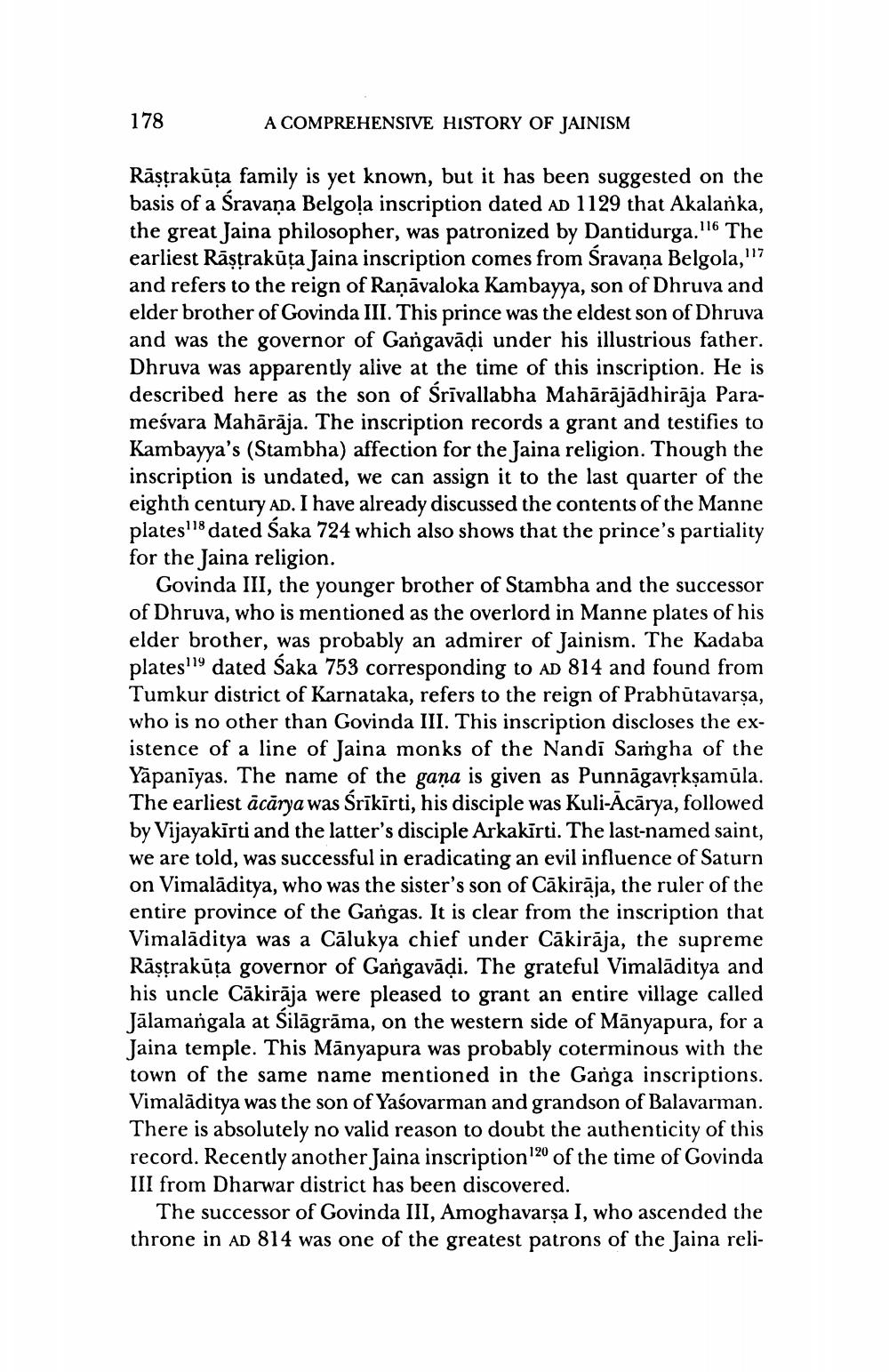________________
178
A COMPREHENSIVE HISTORY OF JAINISM
Rāstrakūta family is yet known, but it has been suggested on the basis of a Śravana Belgoļa inscription dated ad 1129 that Akalanka, the great Jaina philosopher, was patronized by Dantidurga. 116 The earliest Rāştrakūta Jaina inscription comes from Śravaņa Belgola, 117 and refers to the reign of Ranāvaloka Kambayya, son of Dhruva and elder brother of Govinda III. This prince was the eldest son of Dhruva and was the governor of Gangavādi under his illustrious father. Dhruva was apparently alive at the time of this inscription. He is described here as the son of Srīvallabha Mahārājādhirāja Parameśvara Mahārāja. The inscription records a grant and testifies to Kambayya's (Stambha) affection for the Jaina religion. Though the inscription is undated, we can assign it to the last quarter of the eighth century AD. I have already discussed the contents of the Manne plates'18 dated Saka 724 which also shows that the prince's partiality for the Jaina religion.
Govinda III, the younger brother of Stambha and the successor of Dhruva, who is mentioned as the overlord in Manne plates of his elder brother, was probably an admirer of Jainism. The Kadaba plates!9 dated saka 753 corresponding to AD 814 and found from Tumkur district of Karnataka, refers to the reign of Prabhūtavarsa, who is no other than Govinda III. This inscription discloses the existence of a line of Jaina monks of the Nandi Samgha of the Yapanīyas. The name of the gana is given as Punnāgavşkşamūla. The earliest ācārya was Śrīkīrti, his disciple was Kuli-Ācārya, followed by Vijayakīrti and the latter's disciple Arkakirti. The last-named saint, we are told, was successful in eradicating an evil influence of Saturn on Vimaladitya, who was the sister's son of Cākirāja, the ruler of the entire province of the Gangas. It is clear from the inscription that Vimalāditya was a Cālukya chief under Cākirāja, the supreme Rāstrakūta governor of Gangavādi. The grateful Vimalāditya and his uncle Cäkirāja were pleased to grant an entire village called Jālamangala at Silāgrāma, on the western side of Mänyapura, for a Jaina temple. This Mānyapura was probably coterminous with the town of the same name mentioned in the Ganga inscriptions. Vimalāditya was the son of Yaśovarman and grandson of Balavarman. There is absolutely no valid reason to doubt the authenticity of this record. Recently another Jaina inscription 120 of the time of Govinda III from Dharwar district has been discovered.
The successor of Govinda III, Amoghavarsa I, who ascended the throne in AD 814 was one of the greatest patrons of the Jaina reli




